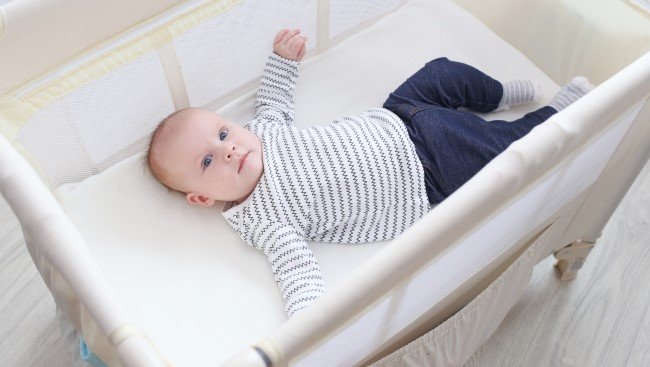Bassinet cleanliness is crucial for your baby’s health and safety, as they spend a significant amount of time in it. In this guide, you will learn imperative steps and tips on how to properly clean your bassinet to provide a hygienic sleeping environment. By following our instructions, you can ensure a safe and sanitized space for your little one to rest peacefully.
Key Takeaways:
- Regular Cleaning Schedule: Develop a routine for cleaning the bassinet, including washing sheets every 1-2 weeks and giving the bassinet a deep clean every six months.
- Proper Cleaning Materials: Use gentle detergent, warm water, disinfectant spray, washcloth, rubber gloves, and a vacuum cleaner for effective cleaning.
- Thorough Cleaning Steps: Remove all linens, wipe down the frame, vacuum, disinfect, wash the mattress, and reassemble the bassinet properly.
- Tips and Tricks: Utilize baking soda paste for tough stains, ensure complete drying before reassembling, and avoid using fabric softeners or placing loose items in the bassinet.
- Safe Sleeping Environment: By following these cleaning tips, you can maintain a sanitized, safe sleeping environment for your baby and reduce the risk of exposure to harmful bacteria.

How to Clean a Bassinet
The cleanliness of your baby’s bassinet is crucial for ensuring a safe and sanitized sleeping environment. Knowing how to clean a bassinet properly is important to protect your baby from harmful bacteria and germs. In this section, we will guide you through the steps on how to effectively clean your bassinet to maintain a healthy sleeping space for your little one.
When and how often should you clean a bassinet?
On top of ensuring an initial thorough clean before your newborn uses the bassinet, it’s important to establish a regular cleaning routine to prevent the accumulation of bacteria. You should clean the bassinet immediately after any diaper leaks or spit-ups occur and wash the sheets every 1-2 weeks. Additionally, give the bassinet a deep clean every six months to maintain a safe and sanitized sleeping environment.
What cleaning materials should you use?
Bassinet cleaning requires a few important materials for effective sanitation. Warm water, gentle detergent, disinfectant spray or wipes, a washcloth, rubber gloves, and a vacuum cleaner are key items you will need to clean your bassinet thoroughly. This ensures that all surfaces are clean and free from harmful bacteria that could potentially harm your baby.
This cleaning regimen, along with the use of appropriate cleaning materials, will help you maintain a hygienic environment for your baby’s sleep.
Steps on how to clean a bassinet
Some important steps to follow when cleaning a bassinet include
- Remove all bedding from the bassinet.
- Wipe down the frame with warm soapy water.
- Vacuum to remove debris.
- Spray or wipe the frame with a disinfectant.
- Wash the mattress.
- Clean the sheets.
- Reassemble the bassinet once everything is dry.
By following these steps regularly, you can ensure that your baby’s sleeping area remains clean and safe.
Understanding the proper steps and techniques to clean your baby’s bassinet is crucial for creating a safe and hygienic sleeping environment. By following these guidelines and maintaining a regular cleaning schedule, you can provide your baby with a clean and sanitized space to rest and grow.
Tips and Tricks for Cleaning Your Bassinet
Some stains and spills on your baby’s bassinet can be a challenge to remove. Consider creating a paste using baking soda and water to tackle tough stains effectively.
- Always ensure the bassinet is entirely dry before reassembling it to prevent mold and mildew from forming.
- If you accidentally tear or damage any parts of the bassinet, reach out to the manufacturer to order replacements promptly.
- Having multiple baby sheets on hand can be beneficial as it allows you to alternate between washes, ensuring a fresh sleeping environment for your little one.
- Clean your baby’s bassinet at least once a week to maintain a safe and sanitized sleeping environment, following the recommended cleaning schedule.
- Avoid using fabric softeners or dryer sheets as they can potentially irritate your baby’s delicate skin.
- Opt for a baby-safe disinfectant spray to clean the bassinet, steering clear of harsh chemicals that could pose a risk to your baby’s health.
- Steer clear of placing any loose blankets, toys, or pillows in the bassinet to eliminate potential suffocation hazards.
The safety and hygiene of your baby’s sleeping space should always be your top priority. By implementing these tips and tricks, you can ensure that your baby’s bassinet remains clean, safe, and comfortable for restful nights and peaceful naps.
Final Words
Maintaining a clean bassinet is crucial for your baby’s health. Follow the tips in this article for a safe and healthy sleeping environment. Develop a regular cleaning schedule, use gentle materials, and avoid harsh chemicals. Taking care of the bassinet is essential for your baby’s safety and hygiene. Follow the guidelines in the article to clean and maintain a sanitized sleeping space. Regularly clean, avoid harsh chemicals, and follow manufacturer recommendations. Your dedication will provide a safe and comfortable resting place for your baby. Thank you for prioritizing your baby’s well-being.
FAQ
Q: How often should I clean my baby’s bassinet?
A: It is recommended to clean the bassinet immediately after a diaper leak or spit-up, wash the bassinet sheets every 1-2 weeks, clean the bassinet mattress every few months, and give the bassinet a deep clean every six months.
Q: What cleaning materials should I use to clean a bassinet?
A: Essential cleaning materials for cleaning a bassinet include warm water, gentle detergent, disinfectant spray or wipes, a washcloth, rubber gloves, and a vacuum cleaner.
Q: How should I clean the bassinet frame and mattress?
A: Use a soft-bristled brush or clean cloth to remove dirt and dust, then spray the mattress, frame, and hard surfaces with a cleaning solution made of warm water and mild detergent. Avoid harsh chemicals and bleach.
Q: Can I use baking soda to clean stubborn stains on the bassinet?
A: Yes, you can use a paste of baking soda and water to remove stubborn stains on the bassinet. Let it sit for a few minutes before wiping it off.
Q: What precautions should I take while cleaning a bassinet?
A: Wash your hands before cleaning, use gloves to prevent contamination, ensure the bassinet is completely dry before reassembling, and avoid using fabric softeners or dryer sheets that can irritate your baby’s skin.















